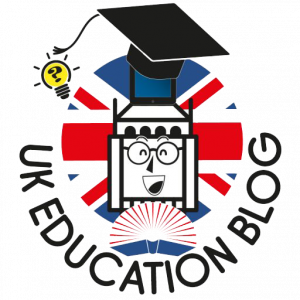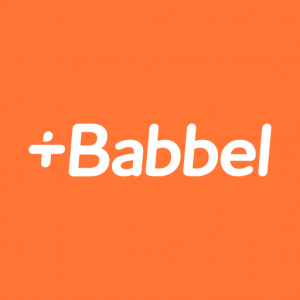In today’s dynamic professional world, the pursuit of lifelong learning is a cornerstone of success. As the adage goes, “Knowledge is power,” and it’s abundantly clear in the realm of education.
Short business courses online have surged in popularity, promising a host of advantages that can reshape your career path.
However, like any educational method, online business courses come with their own set of pros and cons.
In this comprehensive exploration, we’ll delve into both sides of the coin to provide a balanced view of why you should consider studying an online business course.
The Pros: Advantages of Online Business Courses
1. Flexibility Beyond Imagination
Online business courses offer unparalleled flexibility. Unlike traditional education, there’s no need for a daily commute or a rigid classroom schedule. With a few clicks, you can initiate your learning journey from the comfort of your chosen location, be it your home or a local cafe. This flexibility not only saves you valuable commuting time but also allows you to explore a diverse range of subjects and industries, tailoring your education to your career goals and personal interests.
Online learning doesn’t just free you from the confines of a traditional classroom; it allows you to escape geographical boundaries as well. You can choose to study from a beachside cafe in Bali or the comfort of your own home, making education more accessible and adaptable to your lifestyle.
Moreover, the asynchronous nature of most online courses means that you can decide when and how you engage with the material. If you’re a night owl, you can dive into your coursework in the quiet hours of the night. Alternatively, early birds can tackle their studies with the dawn.

2. Elevating Earning Potential
One of the primary motivations for pursuing additional education is the promise of increased earning potential. Online business courses are designed to equip you with the latest knowledge and skills demanded by today’s job market. As industries evolve and adapt to technological advancements, the demand for specialised expertise grows. By investing in yourself through these courses, you’re essentially investing in a brighter financial future where you can open a business bank account online once you start earning.
The old adage “knowledge is power” holds particularly true in the modern job market. Employers highly value employees who not only have the right skills but are also committed to continuous learning and improvement. This commitment often translates to higher salaries, bonuses, and better job offers.
The flexibility of online courses also allows you to continue working while you learn. You can study after work hours or during weekends, ensuring that you don’t need to take a break from your career to upskill. This means you can start reaping the financial benefits of your new knowledge even before you complete your course.
3. Global Networking Opportunities
In the professional world, your network often determines your net worth. Online business courses offer an excellent platform to expand your professional circle. Engaging with instructors and fellow students from around the world opens doors to diverse perspectives and collaborations that can enrich your career in unexpected ways.
These courses often include discussion forums, group projects, and interactive sessions that facilitate meaningful connections. The relationships forged in these virtual classrooms can blossom into valuable connections, mentorships, or even business partnerships. In the digital age, a robust network is a priceless asset, and short courses can be your ticket to building one.
Networking opportunities in online courses are not limited by geographical constraints. You can connect with professionals and experts from different corners of the globe, gaining insights and perspectives that you might not encounter in a traditional classroom. This global exposure can be particularly beneficial if you’re considering a career change or seeking to expand your business internationally.

4. Staying Ahead of the Curve
Industries evolve rapidly, and staying informed about the latest advancements is vital for career longevity. Short online business courses are typically designed and updated by industry experts who are well-versed in cutting-edge trends and technologies. By enrolling in these courses, you gain access to up-to-the-minute knowledge that keeps you relevant and competitive.
Imagine being the go-to expert in your field, the one who’s always ahead of the curve, understanding and harnessing the latest innovations. It’s a proactive approach to professional development that ensures you’re always at the forefront of industry innovations. In a world where the pace of change is accelerating, staying stagnant is not an option.
The knowledge you gain from online courses can set you apart from your peers. You’ll be equipped to tackle challenges and opportunities that others might overlook, positioning yourself as an invaluable asset to your current or future employer.
5. Enhanced Career Prospects
The job market is fiercely competitive, and employers are constantly seeking candidates who can bring value to their organisations. Short online business courses provide tangible evidence of your commitment to personal growth and professional excellence. They showcase your dedication to honing your skills and staying current, making you an attractive candidate for promotions, new opportunities, and career advancement.
Imagine this scenario: Two candidates are vying for a coveted position at a prestigious company. Both have similar qualifications and experience, but one has taken the initiative to upskill through short online courses relevant to the industry. Who do you think would stand out in the eyes of the employer? It’s the candidate who has demonstrated a commitment to continuous learning and an eagerness to embrace new challenges.

6. A World of Learning Choices
Short online business courses come in a vast array of flavours, each catering to specific skills and interests. Whether you’re looking to sharpen your technical skills, delve into creative arts, master project management, or enhance your leadership abilities, there’s a course designed just for you. This diversity of choices means you can curate your learning journey to align precisely with your career goals.
For instance, if you’re in the healthcare sector, you might explore courses in telemedicine or healthcare management. If you’re an aspiring entrepreneur, you could dive into courses on digital marketing or business strategy. The opportunities are endless, allowing you to craft a skillset that sets you apart in your chosen field.
The flexibility of online courses extends to your ability to switch between courses. If you’re interested in exploring multiple areas, you can take courses sequentially or even concurrently. This allows you to build a well-rounded skill set that makes you a versatile and adaptable professional.
7. Learning at Your Own Tempo
In the world of short online business courses, the pressure of keeping up with a fast-moving classroom is a thing of the past. You have the freedom to set your own pace and dictate your learning experience. If you’re a quick learner, you can breeze through modules at an accelerated rate. Conversely, if you need more time to grasp a concept, you’re not bound by a fixed schedule.
This flexibility is a tremendous advantage, especially for those juggling work, family, and other commitments. It empowers you to strike a balance that suits your unique circumstances, making learning a more enjoyable and effective experience.
Moreover, the self-paced nature of online courses allows you to revisit material as often as needed. If you encounter a particularly challenging concept, you can dedicate extra time to mastering it. This ensures that you thoroughly understand and retain the knowledge you acquire, which is crucial for its practical application.

8. Quality Learning Resources
When it comes to online education, the quality of content is paramount. The best short online business courses are developed by experienced professionals in collaboration with subject matter experts, registered training organisations (RTOs), and leading trainers. This ensures that the content is not only relevant but also up to industry standards.
Learners benefit from a wealth of resources, including interactive videos, graphics, articles, quizzes, and more. These multimedia elements enhance the learning experience, making complex concepts easier to grasp and retain. Moreover, the content is regularly updated to reflect the latest industry trends, ensuring that your knowledge remains fresh and relevant.
The technological infrastructure supporting online courses also enhances the learning experience. Learning management systems (LMS) provide a centralised hub for coursework, communication with instructors and peers, and tracking progress. This streamlined approach makes it easier for learners to navigate their studies and access resources.
9. Personal Fulfillment
While career advancement and financial rewards are often primary motivators for upskilling, the personal fulfillment that comes with learning should not be underestimated. Discovering new passions, acquiring fresh skills, and expanding your horizons can be incredibly rewarding on a personal level.
Short online business courses provide the perfect platform to explore areas of interest that you may not have had the chance to delve into previously. Whether you’re interested in history, psychology, languages, or any other subject, you’ll find courses that cater to your curiosity. Learning, after all, is a lifelong journey, and short online courses make it more accessible than ever.

The Cons: Challenges of Online Business Courses
1. Limited Face-to-Face Interaction
Online business courses lack the physical classroom environment, leading to limited face-to-face interaction with instructors and fellow students. While virtual discussions exist, they may not fully replicate the depth of personal interaction some learners require for comprehensive understanding and engagement.
2. Self-Discipline and Motivation Hurdles
The flexibility of online courses can lead to self-discipline and motivational challenges. Without the structure of a physical classroom and face-to-face accountability, some students may struggle to stay on track. Procrastination can become a significant obstacle, potentially leading to missed deadlines and a subpar learning experience.
3. Technology-Related Issues
Online learning relies heavily on technology, and technical glitches or difficulties can disrupt the learning process. Slow internet connections, software compatibility issues, or computer malfunctions can lead to frustration and impede progress. Students who are not technologically savvy may find themselves struggling to navigate the virtual classroom environment.

4. Limited Hands-On Experience
Business courses often involve practical applications of theories and concepts. In a traditional classroom, students may engage in role-playing, real-life case studies, or hands-on projects. Online courses may struggle to provide these hands-on learning opportunities effectively. While simulations and virtual labs exist, they may not fully replicate real-world business scenarios.
5. Delayed Feedback
Online courses may have longer response times for feedback on assignments and assessments. Waiting for feedback can be frustrating, especially when students need clarification or guidance to progress in their studies.
6. Potential for Distractions
Studying online can expose students to a myriad of distractions. Home environments may not always be conducive to focused learning. The allure of social media, household chores, or family interruptions can derail concentration and impact the quality of learning.
7. Credibility Concerns
Despite the proliferation of reputable online courses and institutions, the online education landscape is not immune to unaccredited or subpar offerings. Some employers may still view online degrees or certifications with skepticism, raising questions about their credibility. Students must carefully research and select accredited institutions and programs to ensure their qualifications are recognised in their desired industry.
8. Isolation and Loneliness
The absence of physical classmates and the routine interactions that come with traditional education can lead to feelings of isolation and loneliness in online students. Learning without the camaraderie of peers and the social aspect of campus life can be isolating, especially for those who thrive in a social learning environment.

9. Limited Access to Resources
Traditional universities often provide extensive resources, including libraries, research facilities, and on-campus support services. While online courses do offer digital libraries and some support services, they may not match the breadth and depth of resources available in a traditional setting. Access to physical resources, like physical books and specialised equipment, can also be limited.
Closing Thoughts
In conclusion, the decision to pursue an online business course should be a well-informed one. While the benefits are extensive, the drawbacks must also be considered. It’s essential to evaluate your learning style, goals, and circumstances before embarking on this educational journey. By carefully weighing the pros and cons, you can make a confident decision that aligns with your career aspirations and commitment to continuous learning. Embrace the power of knowledge and choose the path that leads to your professional success. Your career transformation begins with a single step. Enroll in a short online education course today and watch your career soar.




 For the past 25 years, Rosetta Stone has been a leader in language learning. The methods of practice are standard language learning activities you may still recall from your school days. With perfect responses in pronunciation, vocabulary, and grammar, you can review your progress. Rosetta Stone mainly works through daily speech and language exercises via online forums, chats, and activities with speech recognition. It is a subscription-based language study service, but you may
For the past 25 years, Rosetta Stone has been a leader in language learning. The methods of practice are standard language learning activities you may still recall from your school days. With perfect responses in pronunciation, vocabulary, and grammar, you can review your progress. Rosetta Stone mainly works through daily speech and language exercises via online forums, chats, and activities with speech recognition. It is a subscription-based language study service, but you may  Busuu is an excellent app for learning the target language every day in a fun way that will stick in your head. This free program provides a study route that you can follow if you are already familiar with the target language. It asks you to read, listen to, and say common phrases before working through a few tasks to reinforce what you’ve learned. It is the best app for general vocabulary activities and memorisation.
Busuu is an excellent app for learning the target language every day in a fun way that will stick in your head. This free program provides a study route that you can follow if you are already familiar with the target language. It asks you to read, listen to, and say common phrases before working through a few tasks to reinforce what you’ve learned. It is the best app for general vocabulary activities and memorisation. Babbel has been highly rated by many of its users as it offers to learn 14 different languages in one app. You can start for free to test it for yourself first before you join the subscription. Rather than providing pre-packaged courses, it offers customized lectures to keep learners engaged. It breaks down lectures into small, easy to understand and comprehensive materials. Also, it includes engaging quiz-like activities.
Babbel has been highly rated by many of its users as it offers to learn 14 different languages in one app. You can start for free to test it for yourself first before you join the subscription. Rather than providing pre-packaged courses, it offers customized lectures to keep learners engaged. It breaks down lectures into small, easy to understand and comprehensive materials. Also, it includes engaging quiz-like activities. If you are looking for a different language learning experience that other language applications do not offer, you should investigate Duolingo. The app contains some unique possibilities among its 38 language learning options. If you want to enter more than one language course, that’s not a problem. There are lectures and a well-developed in-app activity mechanism that encourages you to review previous materials for your language practice, so you continue where you left.
If you are looking for a different language learning experience that other language applications do not offer, you should investigate Duolingo. The app contains some unique possibilities among its 38 language learning options. If you want to enter more than one language course, that’s not a problem. There are lectures and a well-developed in-app activity mechanism that encourages you to review previous materials for your language practice, so you continue where you left.




































